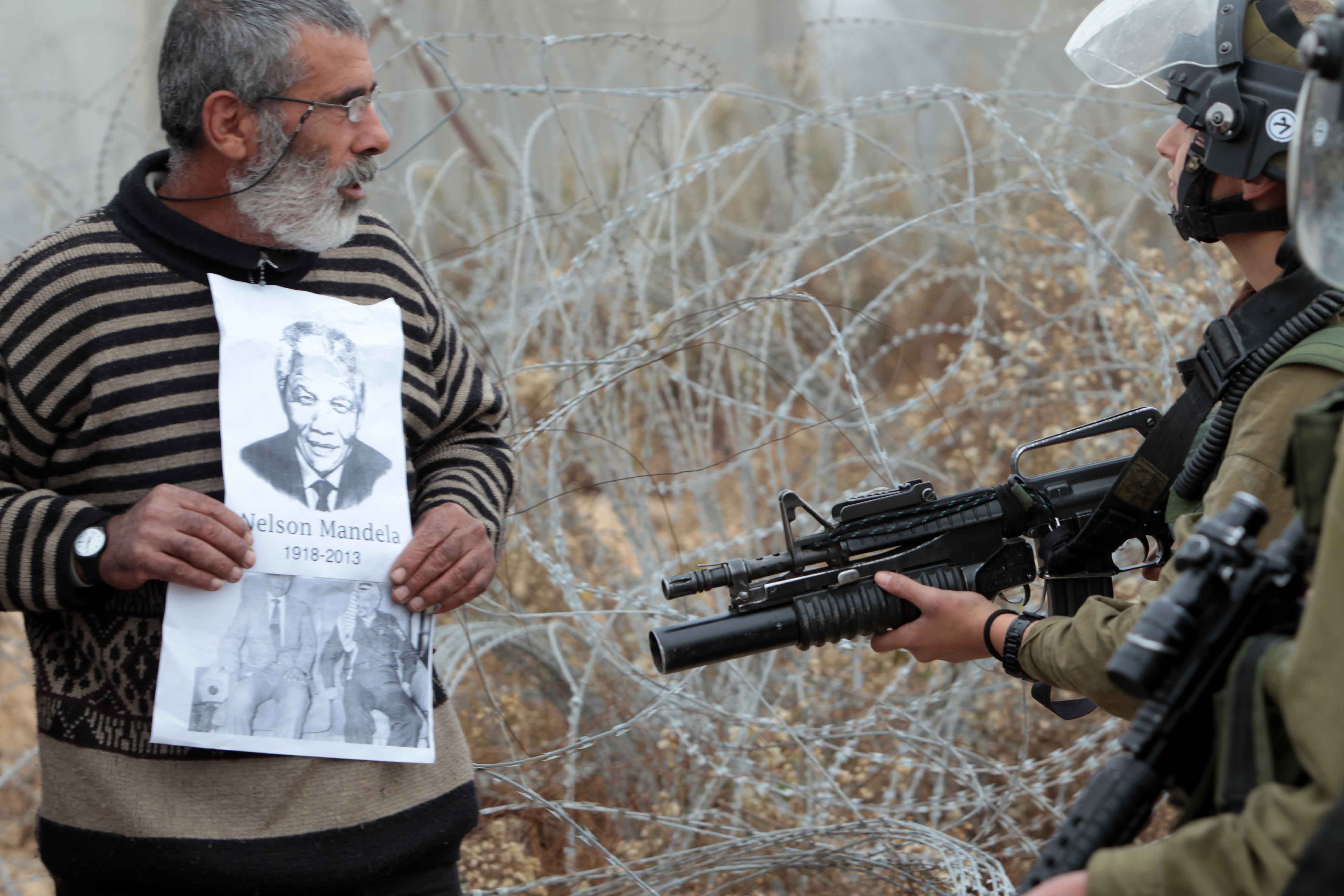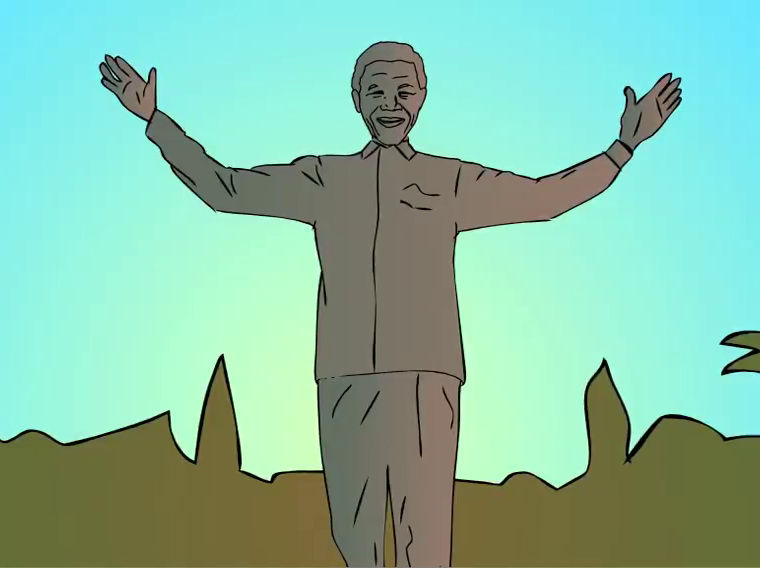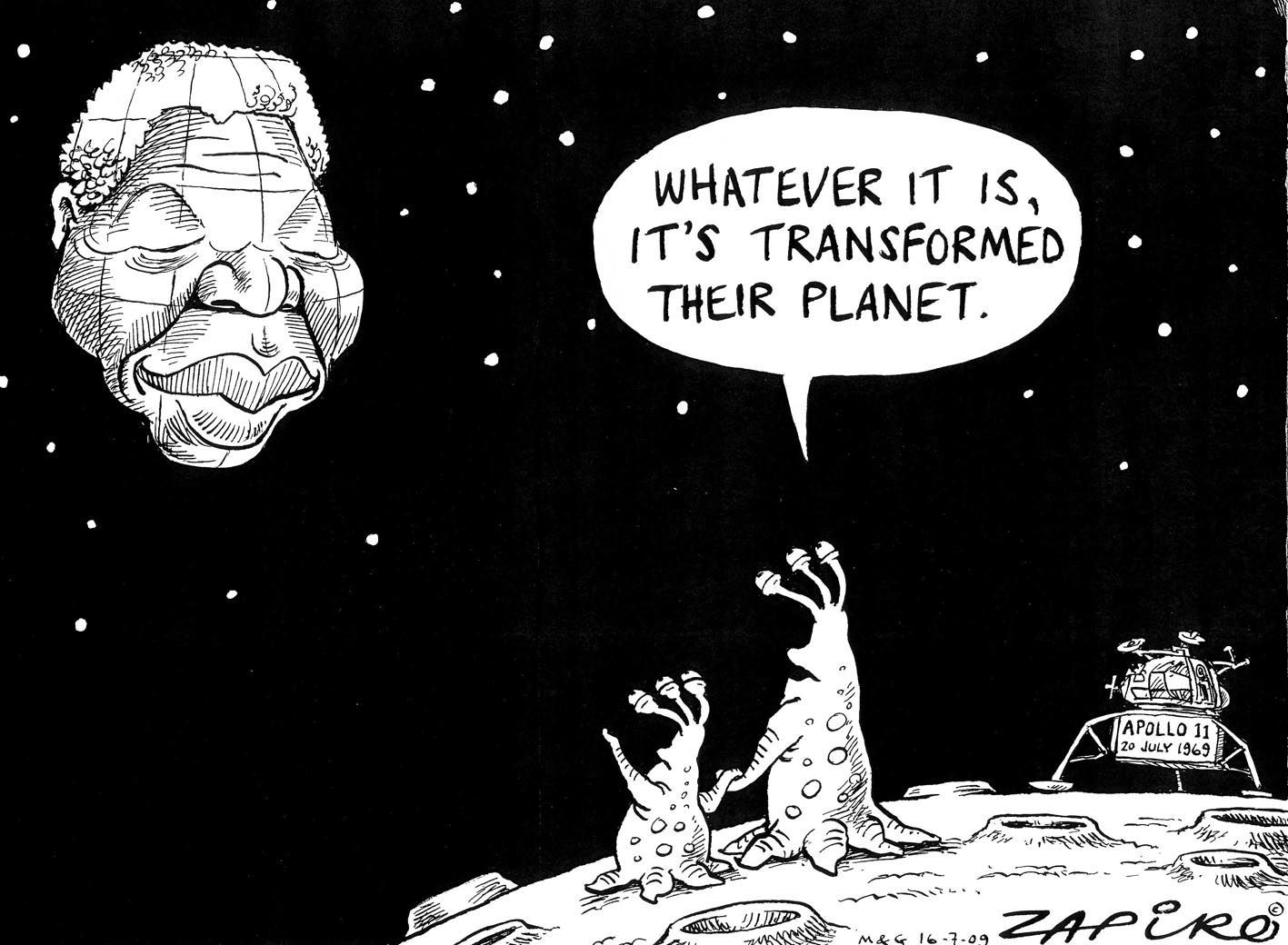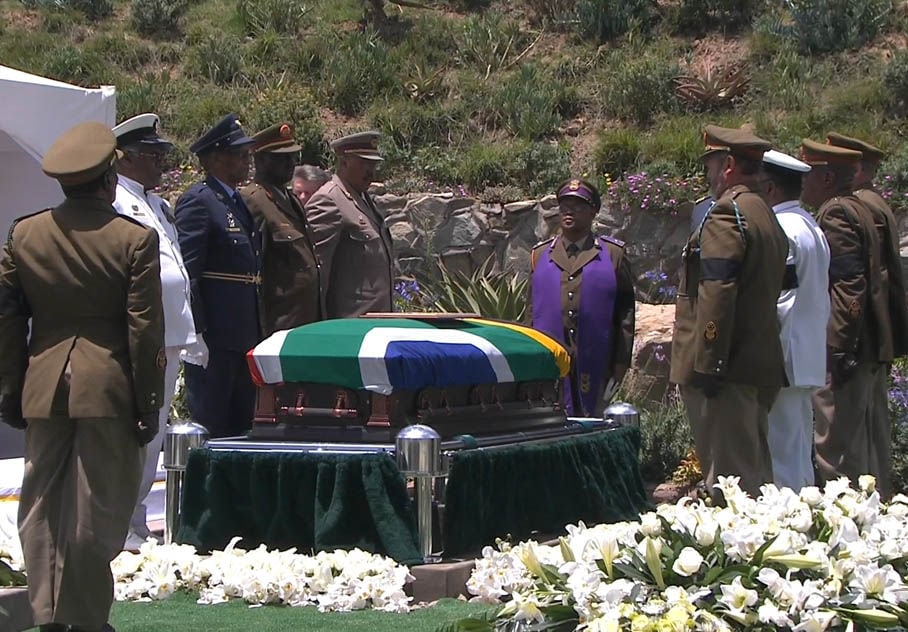
The world pays tribute to Mandela (slideshow)
As South Africans come to terms with the loss of former president Nelson Mandela, the rest of the world bids farewell to Madiba.

Pimples: Saving Madiba's rabbit (video)
Gwede, Mac and Blade try their best to stop the rabbit from whispering in Mandela's ear. But the elusive animal has some tricks up its sleeve.

Zapiro's best Madiba cartoons (slideshow)
From his toughest moments to his most triumphant, Madiba has been an inspiration. Here are some of our favourite Zapiro cartoons about him from 1994 to 2013.

Mandela: SA's greatest son laid to rest (slideshow)
The world watched as Nelson Mandela was finally laid to rest in his hometown of Qunu following a dignified and moving funeral ceremony on Sunday.
After decades behind bars in apartheid South Africa's harshest jails, it was Nelson Mandela's last, most luxurious sojourn -- his "gilded cage". But the garden, personal chef and swimming pool could not disguise the fact that the world's most famous convict was still imprisoned.
On Monday Mandela will return to his final place of captivity to mark the conversion into a museum of a jail he called his "halfway house between prison and freedom" -- the latest addition to South Africa's booming tourist industry.
The business of making the former president a legend in his own lifetime is gathering momentum -- this week's opening at the Drakenstein Prison, formerly the Victor Verster prison, marks another landmark on the long road to freedom trudged by black South Africans, now in danger of being represented almost exclusively by the figure of Mandela.
His previous prison on Robben Island is already a national heritage site which pulls in 300 000 visitors and many millions of rands a year.
Plans made by a group of businessmen in the city of Port Elizabeth to build a metal colossus in Mandela's image have now been approved by the provincial government of the Eastern Cape and a feasibility study is due to report back in March. The statue is planned to be 65 metres high, one-and-a-half times the size of the Statue of Liberty, standing on a 45-metre plinth in turn housing a "museum of freedom" celebrating national liberation struggles around the world.
A 600-metre "long walk to freedom" -- the title of the Nobel prize-winner's autobiography -- would lead up to the monument.
This project looks set to succeed, unlike earlier plans to construct a gargantuan replica of Mandela's fist, to greet passing ships from Robben Island, which fell through when it emerged that the two white businessmen behind the scheme had made much of their fortune by flogging a range of creams and ointments designed to lighten the colour of black skins in imitation of the "master race".
This time a coalition of business and civic interests is determined to make a statue happen. The National Ports Authority has offered land and the regional business federation has started estimating how many tourists and rands would be attracted.
The plan's backers envisage a public-private partnership stumping up the millions of rands needed on the basis of recovering much of the outlay from an average of 5 000 daily tourists.
The French government will be approached to see if it will pay for a French foundry to cast the monument, as it did for New York's Statue of Liberty. The original design had Mandela raising a clenched fist but unease with the symbolism has changed that to an open hand.
Conceived by local advertising executive Kenny McDonald, the plan has been endorsed by several anti-apartheid activists. In addition to Mandela, Eastern Cape has produced struggle luminaries such as Oliver Tambo, Chris Hani and Steve Biko.
Anthony Sampson, Mandela's biographer, said: "Nelson Mandela has always been very careful to resist the cult of personality, both while he was ANC president and since. He was always very careful to show he was part of the group, rather than the lone leader, and to avoid the sort of personality cult that has gone on in other parts of Africa. While he was in prison he was worried that he was being built up into a tremendous cult figure.
"He is not keen on the statue in Port Elizabeth harbour, but the problem is that it has got commercial interest behind it and will be a tourist attraction."
As African countries go, South Africa has been until now surprisingly conservative about glorifying living heroes of the liberation struggle. But, such is the magic of the Mandela name, it seems, it cannot help but stir the entrepreneurial spirit.
South Africa's first democratic president will be the guest of honour tomorrow at the opening of the Drakenstein, a 10-room bungalow preserved so visitors can experience it exactly as it was during his 14 months there, from December 1988. By the time Mandela arrived, the apartheid regime had stopped pretending that he was a terrorist and criminal. Unlike his previous 25 years in Robben Island and Pollsmoor prisons, he was allowed to do as he pleased. He had regular visitors, communicated freely with world leaders by telephone and was even allowed to visit the nearby town of Paarl where he went unrecognised as he had not been photographed since 1965.
"People who have visited the house have been profoundly moved and described it as a spiritual experience. They experience the presence of Mr Mandela," said Uys De Buisson, the Public Works Department official in charge of the project. "People hold Mandela in high regard. By being in a place where he had been, they think they can get in touch with him." Guardian Unlimited (c) Guardian Newspapers Limited 2001

